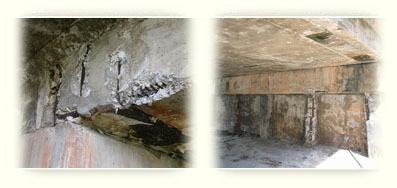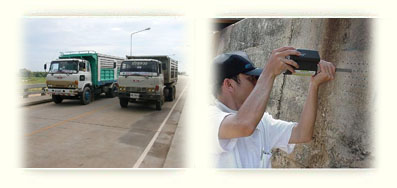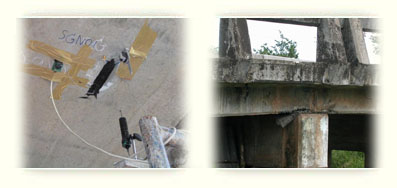| |
This project was instigated by the government policy to increase the permissible weight of vehicles, from currently legitimate 21-ton up to 25-ton 10-wheeled 3-axled truck. Various types of ten concrete bridges in different locations were selected to represent the ordinary bridges supervised by the Department of Rural Roads (DOR). By using well-prepared inspection forms, visual inspection revealed that most of DOR bridges are in the good condition, except for those closed to the sea, where chloride and sulphate can penetrate into concrete causing severe cracking, spalling as well as corrosion of steel reinforcement.

The scope of work also includes non-destructive testing, i.e., rebound hammer testing to measure concrete compressive strength throughout the bridge structure. Furthermore, both static and dynamic load testing were performed to monitor the responses of bridge under predetermined weight magnitudes and locations. The obtained information was used to develop the finite element model of each bridge simulated to evaluate the actual bridge load-carrying capacity.

From the test result, the healthy (no structural defects) bridges with span length longer than 15 meters appear to be able to sustain the new legal allowable load. On the other hand, under the new legal allowable load, some short-spanned bridges with span length shorter than 15 meters are at risk of being damaged due to the increasing weight. Four strengthening methods (i.e., section enlargement, composite with steel plates, composite with FRP plates, and external prestressing) were suggested.

To standardize the inspection and maintenance procedures for the organization, IMMS provided a five-day seminar on the bridge inspection and bridge structural analysis, along with the release of the bridge inspection and maintenance handbook for DOR officers.
|
|